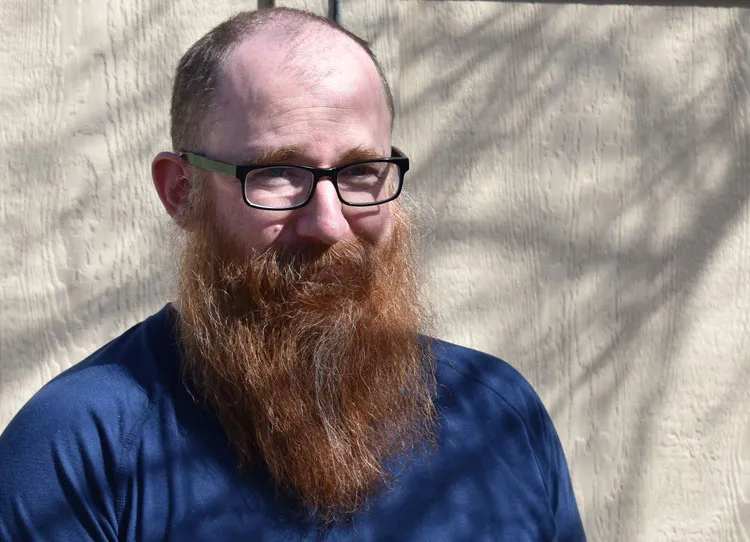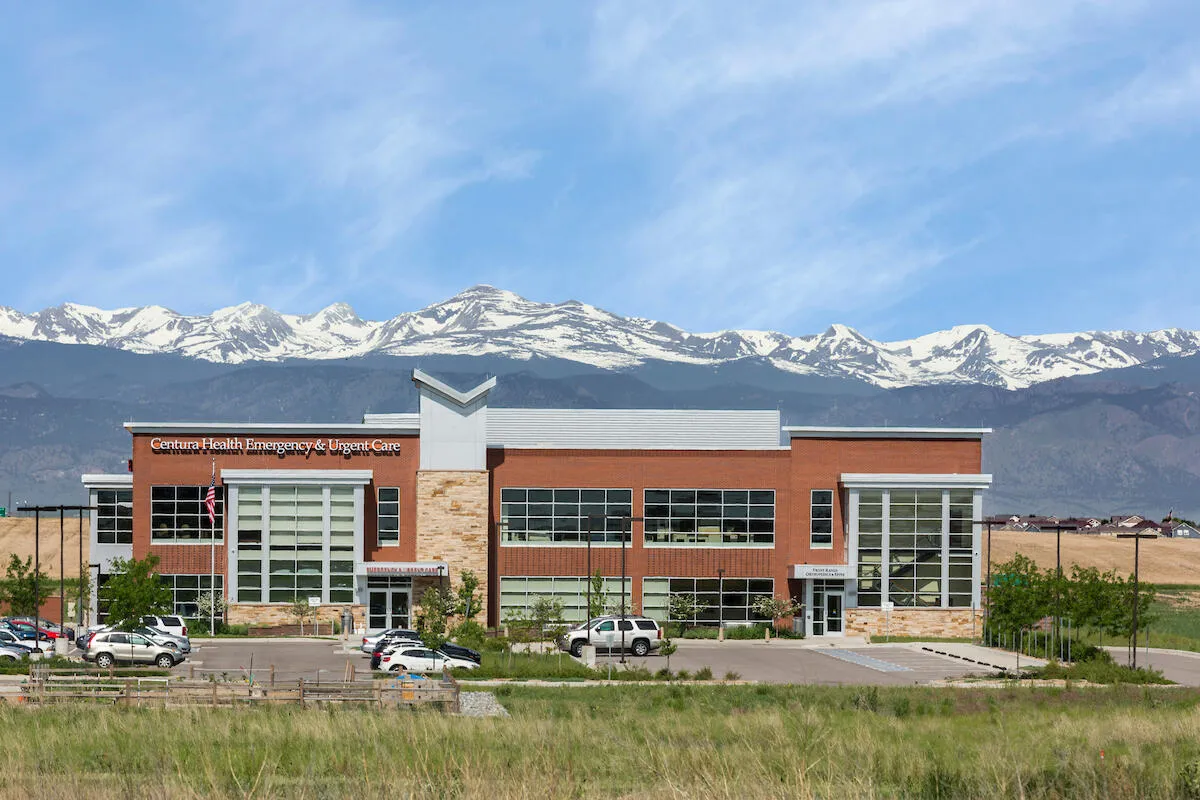There’s COVID. And ‘Long COVID’

LOVELAND — Chad Wittenmyer’s long, red beard has grown unmanaged since March, seemingly at the same rate as his pain.
Twelve months ago, the 40-year old father and stepfather of four was fabricating windmill blades and was in the best shape of his adult life.
But after he contracted COVID-19 in March, a host of medical issues started to emerge. Constant fatigue set in. His heart rhythm was off, and he struggled to breathe under exertion. Eventually, pains and neuropathies developed in his extremities.
SPONSORED CONTENT
Wittenmyer is among those suffering the worst form of “Long COVID,” a catch-all for ongoing symptoms that some COVID-19 survivors endure after the infection period.
Medical researchers aren’t sure why an estimated one-third of the approximately 28 million Americans who test positive have some level of worse health after their infection period, nor have they figured out why some patients report mild symptoms and others are wracked with pain.
For most of the past year, the focus of scientists and governments was to reduce the spread and death toll and to eventually vaccinate enough people to stop the virus’ threat. But after the pandemic is contained and life begins to enter a post-COVID era, how will they manage a new class of millions of Americans who may never fully recover?
Tests
Wittenmyer and his family were on a vacation in Mexico and arrived back in the U.S. two days before international travel was suspended between the countries. His employer ordered him to quarantine for two weeks since he had been abroad, and while doing so, a friend of his, who later tested positive, brought some food for the family.
On the first day after he returned to work, Wittenmyer broke a moderate fever, began coughing and struggled to breathe behind his mask at work. On the second day, he lasted 45 minutes into his shift before he lost the strength to turn a wrench.
During a video appointment, Wittenmyer’s doctor said his symptoms matched COVID and said he likely was infected. At that point, COVID tests were in such short supply that they were only used to diagnose people requiring intensive-care beds.
But Wittenmyer’s strength didn’t return.
“Before going to Mexico, I was the most physically fit I’ve ever been in my entire life,” he said. “I worked 12-hour shifts in the factory, which was very physically demanding going up and down ladders all day and lifting heavy things and moving stuff around. And then, all of a sudden, I’m not even able to do what essentially was a simple task.”
The aftershocks of illness
Dr. Daniel Goldberg, a faculty member at the University of Colorado Anschutz Campus who studies medical history and ethics, said it’s fairly common for an acute medical issue to trigger lasting medical issues.
For example, myalgic encephalomyelitis, or what used to be called chronic fatigue syndrome, is similar to the extreme fatigue that some Long COVID patients experience. It’s not known what exactly causes ME, but researchers estimated that between 830,000 to 2.5 million Americans had it, and it cost the U.S. economy between $17 billion to $24 billion annually due to lost wages and medical costs.
However, Goldberg said medical practitioners have historically been poor at treating patients whose pain evades diagnostics because they often simply don’t believe the patient is as sick as they’re saying.
Those illnesses are known as “contested illnesses,” and Goldberg is not surprised that some people’s severe symptoms are being denied as real, as are their claims for disability insurance or accomodations at work.
“The central nervous (system), which is chronic pain, doesn’t show up on scans and blood work, things like that. And so that is a major factor in why people who’ve lived with chronic pain are treated so poorly by people, both within and without health systems, by health professionals and others, as well by lawmakers and, unfortunately, by family members and by loved ones,” he said.
A dispute over what’s real
After he spent another two weeks quarantined on the advice of his doctor, Wittenmyer continued to struggle and went on bouts of short-term disability until he was terminated on Aug. 1 since he was no longer able to work.
His long-term disability insurer contacted his doctor and heard his list of symptoms but later denied him coverage because he had never tested positive for either an active-infection test or an antibody test that would have proven past infection.
“There have been no physical exams of diagnostic testing to support your subjective complains (sic) that would warrant restrictions and limitations from working,” the insurer wrote in a letter to Wittenmyer that was reviewed by BizWest.
But Wittenmyer wasn’t sick enough in March to get one of the few COVID tests being produced at the time, meaning he has no evidence other than his doctor’s virtual diagnosis that he was infected.
Scott Skinner-Thompson, a professor at the University of Colorado Law School that focuses on civil rights, said that many of the symptoms of Long COVID would be covered under the broad definitions of the Americans with Disabilities Act.
That landmark law defines a disability as any physical or mental impairment that substantially limits one or more major life activities. Symptoms such as fatigue, chronic pain or bouts of shortness of breath are likely to qualify and would require employers to make accommodations for those employees, regardless of medical proof.
“Just because a doctor may not be able to pinpoint the symptoms or impairment to COVID the disease, that doesn’t mean that they will be prevented from falling under the statutory definition of disability under the ADA,” he said.
T.J. Geist, the director of claims, initial and consideration for Social Security Disability Insurance assistance firm Allsup, told BizWest that his company has seen a growing number of Social Security claims from people who either developed severe forms of Long COVID or had prior medical issues that were inflamed after their infection.
The Social Security Administration was already leaving applications with three to five-month wait times for first-time claims before the pandemic, and Geist said those wait times are going to become longer as more people apply for long-term disability and the pandemic lengthens wait times.
He worries that even longer wait times will put the most vulnerable claimants into financial peril.
“The longer individuals have to wait for their disability claim to be processed and ultimately awarded, there’s increased likelihood of bankruptcies and foreclosures and general instability, disruption and individuals lose their health care,” he said.
Long COVID accommodations at scale
If the CDC’s estimate that a third of COVID survivors carry some form of Long COVID, that would mean at least 8.4 million Americans are facing mild to major symptoms of a condition that science doesn’t know much about yet.
Kevin Williams, the legal director of the Colorado Cross-Disability Coalition, said that ultimately, an employee who has a disability has to be able to perform the basic duties of that job with or without accommodation.
That’s where a Long COVID claim could get tricky. Williams can’t walk due to a spinal cord injury, but he’s a lawyer and can do his job using speech-to-text software and other accommodations.
But for Wittenmyer and others in his position with physically intensive jobs, they may not be able to return to that line of work or in other lines that fit their skill sets.
“There might be some things he could do, but he probably can’t do the job that he did before,” he said.
Nor can Wittenmyer apply for unemployment benefits, as those programs require someone to be physically able to work.
Goldberg said people who live with chronic pain often aren’t given the accommodations they need at work, school or other societal institutions, and he fully expects that to apply to those suffering with moderate or severe Long COVID.
However, he thinks that as more parts of the population report having Long COVID and researchers learn more about the condition’s causes and treatments, the stigma will reduce. He compared it to post-traumatic stress disorder, which shrunk as a contested illness over the decades after more veterans returned from combat.
“It’s certainly possible that just the sheer impact that COVID has had and the numbers of people who live with Long COVID will change our attitudes toward the people who live with it, and what it means to have Long COVID and maybe that will result in better treatment of people,” he said.
The first glimmers of Long COVID research
In the final week of February, researchers who were collecting real-world data for the Pfizer vaccine said that the two doses cut down symptomatic cases of COVID-19 by 94% across all age groups, a figure that gives hope to the idea that vaccines can put an end to a short but intense era of human suffering.
Although an initially slow vaccine rollout and the threat of emerging variants loom, the pandemic is showing signs of curbing across much of the U.S. as of this story’s publication, and public health experts believe large parts of American society can return to something resembling normal by the late summer or fall.
As fewer resources are poured into treating active COVID, a few clinics devoted to treating Long COVID are starting to form across the country.
That’s a relief to Wittenmyer, who has spent much of the past few months as a stay-at-home dad and wondering when his condition will get the kind of deep research that other maladies would.
His wife and children are what’s keeping him getting out of bed each morning despite constant pain across his body. While his wife works, Wittenmyer cooks, folds the laundry and holds his youngest son during naptime.
All the while, he waits for the pandemic to end, and he hopes that his condition doesn’t last a lifetime.
“I know that the medical industry as a whole is kind of in triage right now, just trying to get to the people who are the worst,” he said. “But there’s still something wrong with me.”
LOVELAND — Chad Wittenmyer’s long, red beard has grown unmanaged since March, seemingly at the same rate as his pain.
Twelve months ago, the 40-year old father and stepfather of four was fabricating windmill blades and was in the best shape of his adult life.
But after he contracted COVID-19 in March, a host of medical issues started to emerge. Constant fatigue set in. His heart rhythm was off, and he struggled to breathe under exertion. Eventually, pains and neuropathies developed in his extremities.
Wittenmyer is among those suffering the worst form of “Long COVID,” a catch-all for ongoing symptoms that some COVID-19…




